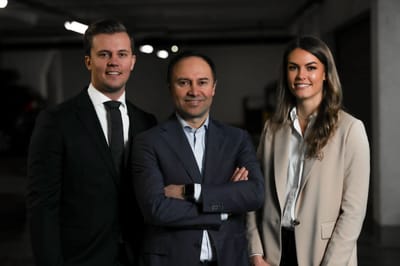LESSONS LEARNED
EVOLUTION OF 21ST CENTURY REMOTE MEDICAL WORKFORCE & DIGITAL PLACEMAKING
Do you have family members working on the Frontlines dealing with this COVID-19 crisis? We do!
Many physicians are completely handcuffed by cross competition of hospitals that need to coordinate limited Covid-19 resources in this environment. In most states, a patient’s ZIP Code will determine whether they die from Covid-19.
TNALT members identified a regional approach to meeting the community’s needs as essential because:
• Different hospitals will face shortages at different times;
• Some hospitals offer more specialized care;
• Some populations will suffer more from complications from COVID-19 than others.
TNALT has partnered with an association of Chief Executive Officers (CEO) to guide us on Covid-19 solutions aligned with provisioning more rapid comprehensive response to medical needs through a “Remote Medical Workforce”. As there exists (Cross Industry) widespread inclination to gravitate to greater dependency on a Virtual Workforce, TNALT is being guided by multiple corporate participants in development of a “Digital Placemaking Best Practices” data base for the Remote Medical Workforce, at the local level.
Our partner in this endeavor includes experts dealing with all aspects of The Remote Work Environment. They continually update all TNALT participants forward on location specific “Case Studies” including:.
1) Technology required for physician to practice remotely,
2) Services & Products to augment their individual lifestyle needs to practice remotely,
3) Alignment of medical community support & sharing structure at local level,
4) Coordination with firms servicing medical industry at remote level (e.g. hospital, healthcare clinics etc..),
5) The resilience of existing critical infrastructure.
The TNALT process includes an evaluation of the resilience of critical infrastructure utilizing a Critical Infrastructure Resilience Index (CIRI) that measures impact of dollars spent on critical infrastructure to required regional resilience of same. This is necessary for development of the Telehealth Center, and support of operational personnel (e.g. 25 to 200 physicians-staff).
We have overwhelming support from tens of thousands of these Frontline Workers, and their respective families who are counting on us! We all have an obligation to better coordinate a SUSTAINABLE response.
Many physicians are completely handcuffed by cross competition of hospitals that need to coordinate limited Covid-19 resources in this environment. In most states, a patient’s ZIP Code will determine whether they die from Covid-19.
TNALT members identified a regional approach to meeting the community’s needs as essential because:
• Different hospitals will face shortages at different times;
• Some hospitals offer more specialized care;
• Some populations will suffer more from complications from COVID-19 than others.
TNALT has partnered with an association of Chief Executive Officers (CEO) to guide us on Covid-19 solutions aligned with provisioning more rapid comprehensive response to medical needs through a “Remote Medical Workforce”. As there exists (Cross Industry) widespread inclination to gravitate to greater dependency on a Virtual Workforce, TNALT is being guided by multiple corporate participants in development of a “Digital Placemaking Best Practices” data base for the Remote Medical Workforce, at the local level.
Our partner in this endeavor includes experts dealing with all aspects of The Remote Work Environment. They continually update all TNALT participants forward on location specific “Case Studies” including:.
1) Technology required for physician to practice remotely,
2) Services & Products to augment their individual lifestyle needs to practice remotely,
3) Alignment of medical community support & sharing structure at local level,
4) Coordination with firms servicing medical industry at remote level (e.g. hospital, healthcare clinics etc..),
5) The resilience of existing critical infrastructure.
The TNALT process includes an evaluation of the resilience of critical infrastructure utilizing a Critical Infrastructure Resilience Index (CIRI) that measures impact of dollars spent on critical infrastructure to required regional resilience of same. This is necessary for development of the Telehealth Center, and support of operational personnel (e.g. 25 to 200 physicians-staff).
We have overwhelming support from tens of thousands of these Frontline Workers, and their respective families who are counting on us! We all have an obligation to better coordinate a SUSTAINABLE response.



